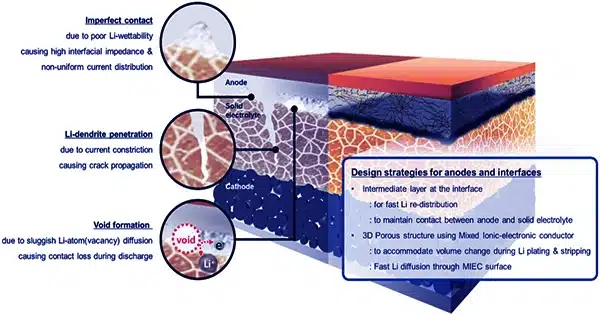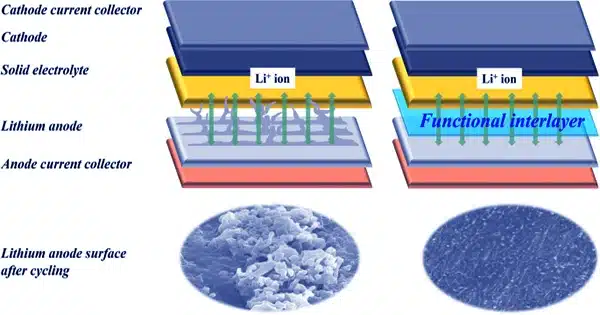Engineers and chemists have worked for decades to develop increasingly powerful battery technologies that can assist fulfill the growing demands of the electronics industry. This has resulted in the development of new types of batteries, such as all-solid-state batteries.
All-solid-state batteries (ASSBs) are battery cells with a solid electrolyte sandwiched between two electrodes. These batteries, notably all-solid-state lithium-metal batteries (ASSLBs), have high energy densities and improved safety, addressing some of the drawbacks of traditional lithium-ion battery (LiB) designs.
Despite their advantages, ASSLBs have not yet been widely utilized. This is due in part to the rapid growth of Li dendrites and their high interface resistance, which can considerably hamper their performance.

Researchers at the University of Maryland recently proposed a novel paradigm for developing safe and high-energy ASSLBs. This idea, described in Nature Energy, could aid in the development of more powerful and reliable fuel cells for electric vehicles and big robotic systems.
“The current effort to address the lithium dendrite issue in all-solid-state batteries is based on trial-and-error experiments,” Zeyi Wang, first author of the work, told Tech Xplore. “Rather than reporting on a single interlayer, this study seeks to propose an interface design approach that can guide the production of a succession of interlayers. This is a method for totally resolving the lithium dendrite issue in all-solid-state batteries.”
Wang and colleagues’ latest work aimed to uncover a promising technique for mitigating Li-dendrite development in ASSLBs. To do this, the researchers proposed adding a unique layer between the lithium anode and the solid electrolyte in battery cells.
“Adding a special layer between the lithium anode and the solid electrolyte can potentially tackle lithium dendrites issues, but the properties of the interlayer are of key importance to attain this,” Wang went on to say. “Our design philosophy links battery stability to several important interlayer features. It emphasizes that the interlayer must be lithiophobic (repelled by lithium metal), strongly ionic conductive, mildly electronic conductive, and porous.
The researchers developed a Li4SiO4@LiNi0.8Mn0.1Co0.1O2/Li6PS5Cl/20 µm-Li battery cell with a capacity of 2.2 mAh cm-2. In initial tests, these battery cells performed exceptionally well, keeping 82.4% of their capacity after 350 cycles at 60°C at a rate of 0.5°C.
“While previous studies introduced many interfaces for lithium dendrite suppression, their underlying mechanism was not explained clearly and the design cannot be generalized,” Wang told Reuters. “The success of our design principle is that it opens new opportunities to develop safe batteries.”
Notably, Wang and his colleagues’ design idea could be extended to a wide range of ASSBs, reducing Li-dendrite production and improving battery performance. As a result, it may soon pave the way for the development of a diverse variety of safe and high-performance battery technologies based on solid electrolytes, capable of powering electric automobiles and other massive devices.
“In our next studies, we will test more interfaces to modify and verify the design principle,” Wang went on to say. “We will then optimize the interface’s materials using design concepts. We intend to scale up manufacturing and eventually test the device on vehicles in the future.”















